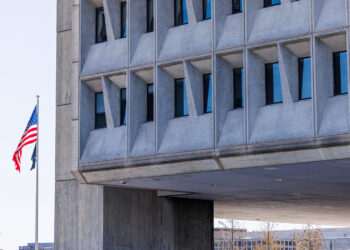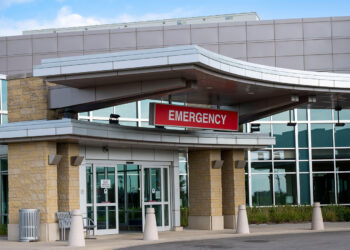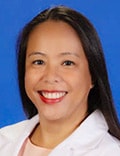
Catherine Cansino, MD, an obstetrician in central California, shares the same concerns as many physicians about navigating the complex legal and ethical issues surrounding abortion in the US today.
For clinicians, the question is, “Even if you are doing the right thing,” she said in a recent interview, “will something bad happen?” For example, if a patient is having a miscarriage or an ectopic pregnancy, doctors wonder whether the treatment will be considered an abortion. And while abortions are legal in California, she worries about the legal ramifications of caring for out-of-state residents.
Such has been the fallout from the Supreme Court’s 2022 decision eliminating the federal right to an abortion. Forty-one states now ban abortion altogether or at varying gestational ages and with varying exceptions.
And while physicians like Cansino face many uncertainties, some appear to be responding to those laws by finding ways to meet demand for vital reproductive health services. Some, however, are leaving states with abortion bans to practice in those without them.
A 2025 study published in JAMA found roughly 1 in 6x clinicians who provide abortion care said they had relocated to a new state to practice by 2023: 42% of those previously practicing in a state with an abortion ban said they had moved to a state without such rules.
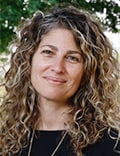
“We were just struck by the difference between clinicians practicing in states that didn’t ban abortions vs states that did impose either a full ban or a 6-week ban,” said Dana Howard, PhD, an assistant professor in the Department of Bioethics at The Ohio State University College of Medicine, in Columbus, Ohio, who helped conduct the research.
The decision may also be reshaping medical training programs. The most recent data from the Association of American Medical Colleges (AAMC) on the 2023-2024 Ob/Gyn residency match reported a 6.7% drop in applications to programs in states with bans compared with a 0.4% increase in applications to programs in states where abortion remained legal.
A Long History of Declining Access
Access to training in abortion care had started to decline before Dobbs. In a 1991-1992 survey of program directors of Ob/Gyn residency programs in the US, the proportion of programs providing routine training for first-trimester abortion was 12% and for second-trimester abortion was 7%.
In response to these findings, in 1996 the Accreditation Council for Graduate Medical Education mandated access to experience with induced abortion as part of residency education, although programs or residents with religious or moral objections could opt out. If residency programs did not provide abortion training at their institution, they were expected to help residents find training options.
The Kenneth Ryan Jr. Residency Training Program was launched in 1999 to help residents access abortion training. The program, started at the Bixby Center for Global Reproductive Health of the Department of Obstetrics, Gynecology, and Reproductive Sciences at the University of California at San Francisco (UCSF), has supported 120 Ob/Gyn departments in improving their abortion training for their residents, said Jody Steinauer, MD, PhD, a distinguished professor of obstetrics and gynecology at UCSF who directs the center.
In addition to learning the critical skill of safely evacuating the uterus, she said, “You learn incredible skills in ultrasound and patient counseling, how to be empathetic and compassionate, how to do the actual procedure, anesthesia, and how to take care of people after their abortion.”
Still, Steinauer said, more than 50 Ob/Gyn programs with over 1000 residents exist in states with bans. “Even if you’re only having a rotation for them in one of their four years, that’s still 250 Ob/Gyn residents each year that need training,” she said.

Rachel Crebessa, MD, was one of those trainees. Crebessa struggled to find a place to train in abortion procedures because her own program did not offer it. “I reached out to no less than 50 different clinics or programs to try and find somewhere that had room and the capacity to take an out-of-state resident. I was met with a dead end every single time,” she said.
Fortunately, the Ryan Program based at Oregon Health & Science University (OHSU) in Portland, Oregon, immediately responded to the need to provide training to out-of-state residents.
“When the leaked SCOTUS decision came out, we saw the writing on the wall,” said Alyssa Colwill, MD, an associate professor of obstetrics and gynecology at OHSU. We realized that “a large proportion of residents are training in states that were no longer going to have access to abortion training.”
Colwill and her colleagues developed the Complex Family Planning Visiting Resident Elective, which is committed to educating out-of-state Ob/Gyn residents without access to abortion training in their home state. As of June 2025, the OHSU elective has hosted 22 residents and three out-of-state fellows.
Crebessa participated in the OHSU elective in the fall of 2023. For her, practicing in a state without an abortion ban was a relief, she said. “I was definitely a lot more confident and open about the kind of care that I wanted to provide.”
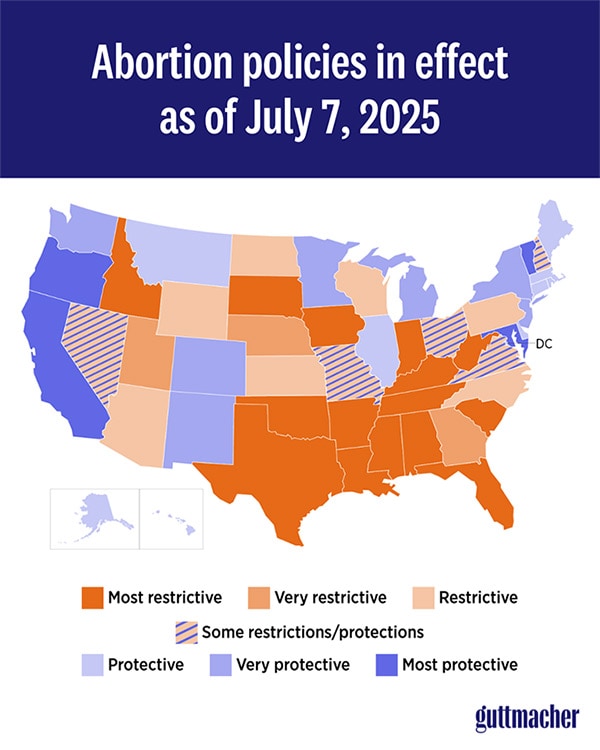
The Guttmacher Institute reported that about 1 million abortions were performed in the US in 2023, the first full calendar year after the Supreme Court overturned Roe v. Wade. That figure marked an 11% increase from 2020, the last year in which formal estimates are available. Much of the rise was due to increases in states without bans that border states with bans; these states saw a 38% increase in the number of abortions between 2020 and 2023.
Although efforts by organizations such as the Ryan Program and the OHSU elective can help mitigate the effect of Dobbs, the geography of abortion availability is still daunting. Colwill said she worries about the growth of maternity care deserts in many parts of the country.
“We’ve seen in states like Idaho a large exodus of Ob/Gyns practicing in that state,” she said. “And since the Dobbs decision, they have closed two labor and delivery units in the state.”
Steinauer pointed out that AAMC also reported decreases in applications to residencies in other specialties in states that have abortion bans. Family medicine, pediatrics, internal medicine, and emergency medicine residency programs all saw declines in applicants in the 2023-2024 match. “I’m very worried that we’re going to see programs that don’t fill, until there are cities and regions in rural areas that don’t have enough doctors who can provide care in general,” she said.
But not everyone leaves. Jewel Brown, MD, an associate professor of obstetrics and gynecology at an academic medical center in Florida, attended medical school and completed her Ob/Gyn residency in Florida in the pre-Dobbs era.
Brown chose to do a complex family planning fellowship in California since there wasn’t one in Florida. She dreamed of coming back to work with her former residency mentor to start a similar fellowship program in Florida.
The passage of Dobbs and a subsequent 6-week ban on abortion in Florida seemed to deny that goal, but after finishing her fellowship in the summer of 2024, Brown took a position in Florida anyway.
Brown admits some disappointment about not being able to work as a full-time specialist in complex family planning like her colleagues in California. Instead, she works 1 day a week in the local Planned Parenthood clinic and 1 day a week at her academic institution doing complex contraception visits and managing patients with early pregnancy loss. The rest of her week is spent doing routine Ob/Gyn care.
But Brown’s skillset is critical. She often receives referrals from providers “unwilling to jump through the regulatory hoops needed to perform an abortion on a woman with a valid medical indication.” For her, satisfaction comes from being able to provide care to the patient with a fetal demise who drove 5 hours from south Florida to her hospital.
Brown, Cansino, Colwill, Crebessa, Howard, and Steinauer reported no financial conflicts of interest.
A former pediatrician and disease detective, Ann Thomas is a freelance science writer living in Portland, Oregon.
Source link : https://www.medscape.com/viewarticle/obstetrics-time-dobbs-2025a1000ixk?src=rss
Author :
Publish date : 2025-07-17 06:41:00
Copyright for syndicated content belongs to the linked Source.



